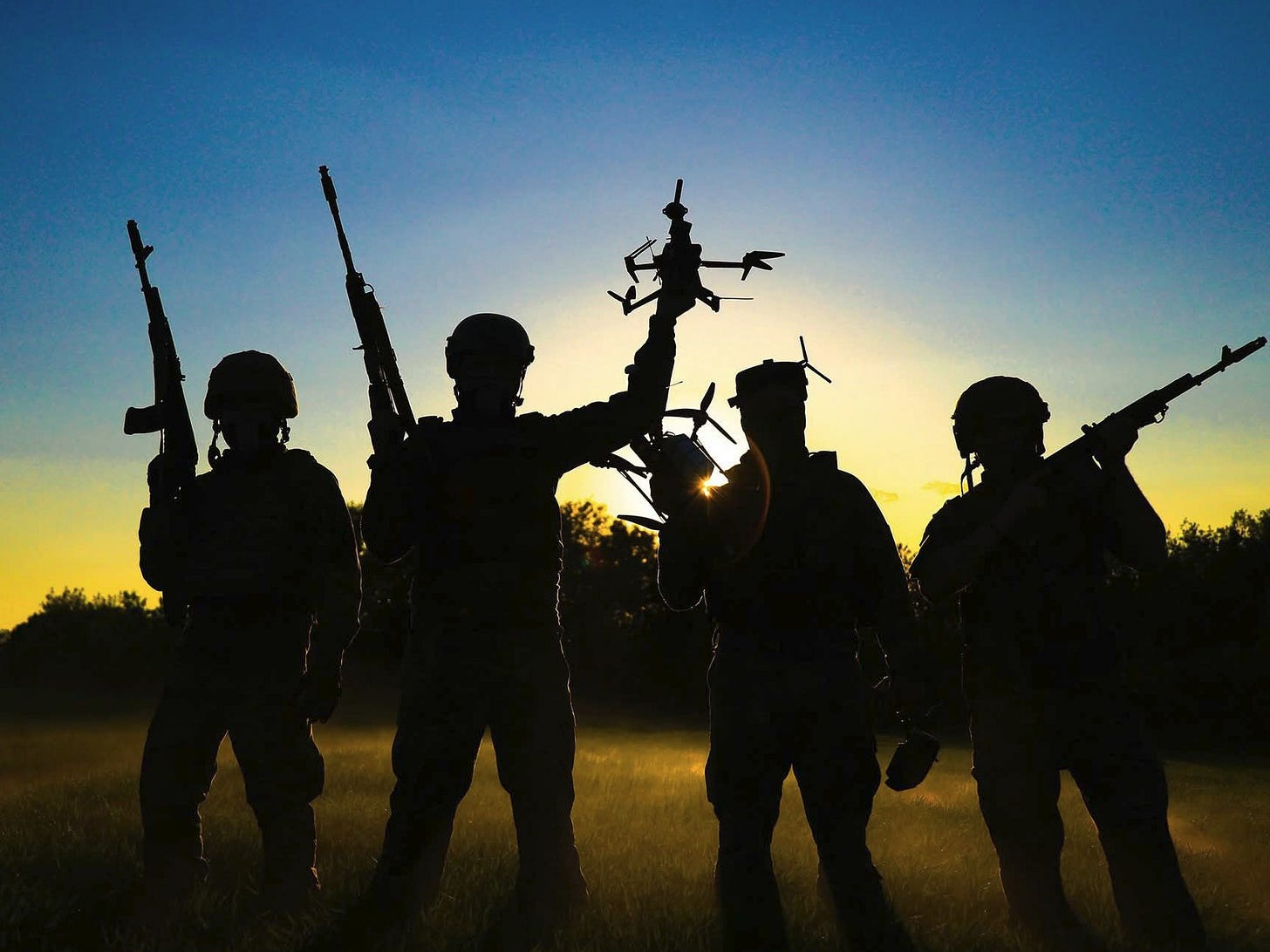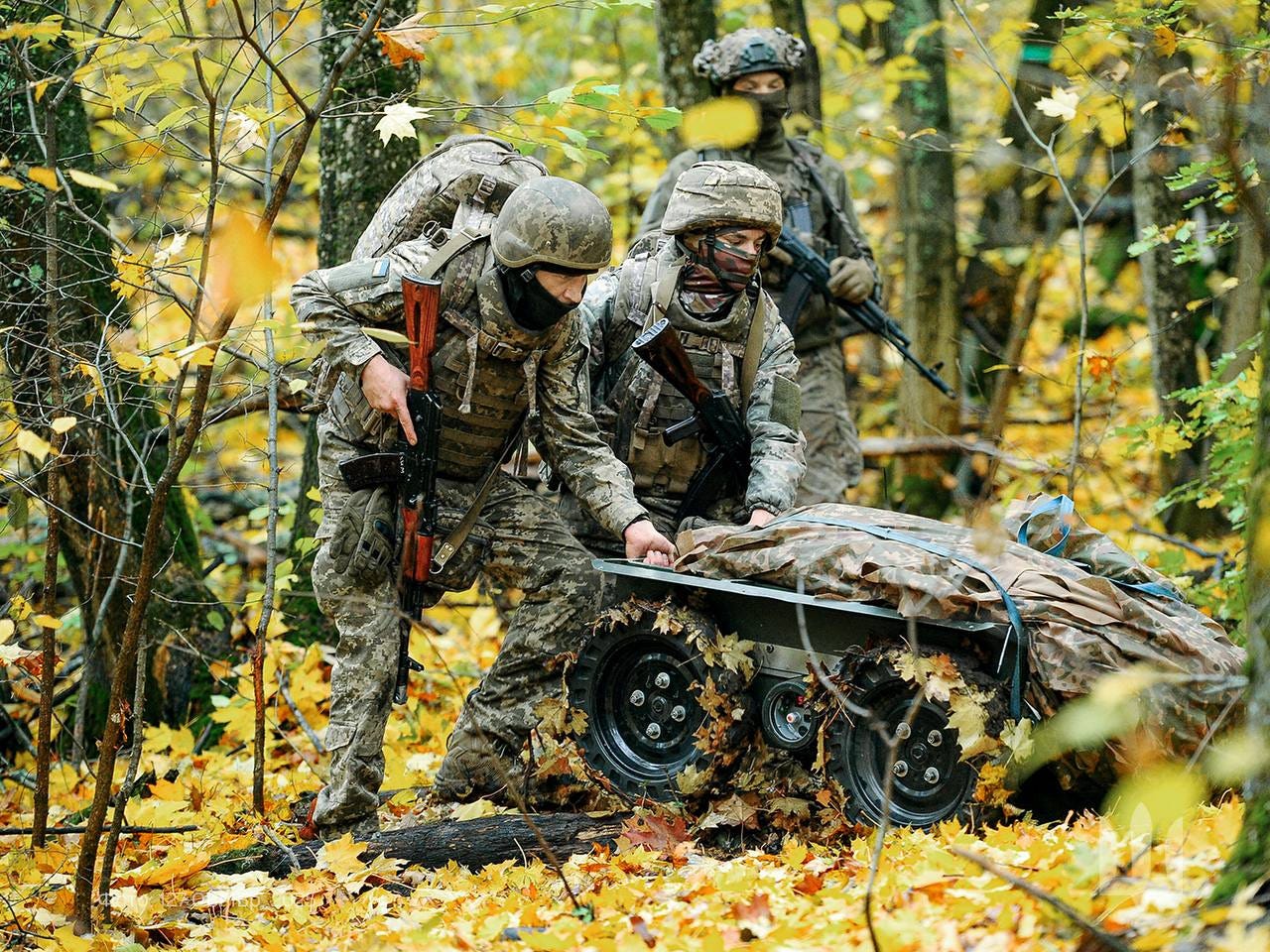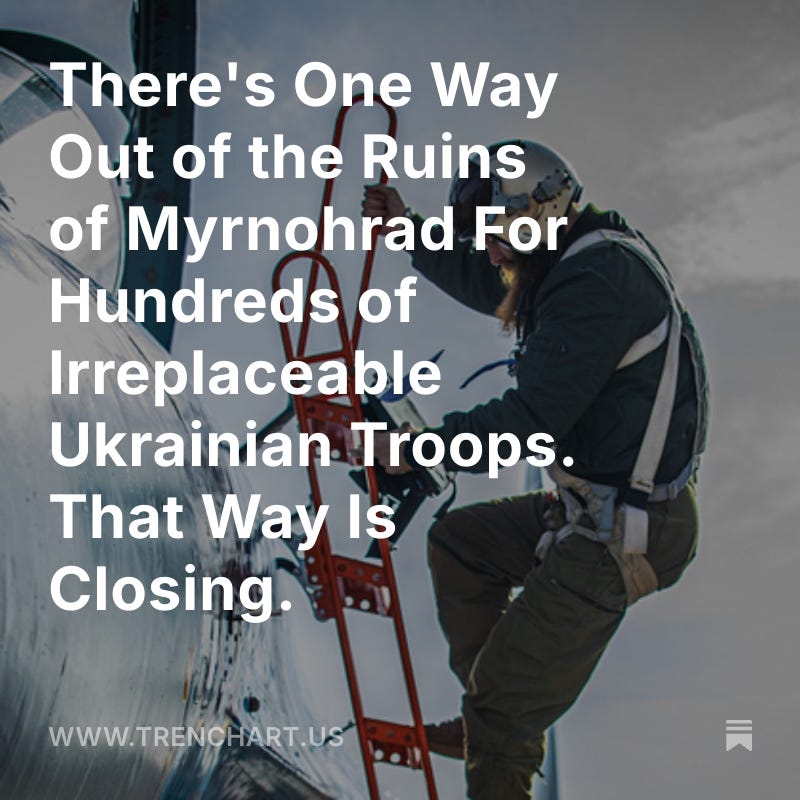Future Wars Will Look Like Ukraine
Just like Spain in 1936, Ukraine is a laboratory for new ideas and technology
by YEVHENII VALIIENKO
When the Spanish Civil War erupted in 1936, the world framed it as an internal struggle. But beneath the ideological slogans and street battles, Spain became something far more consequential: a live laboratory where foreign powers tested weapons, doctrines and political strategies that would soon reshape the entire world.
Nearly a century later, Ukraine has taken on an eerily similar role. Though very different in context and technology, both conflicts have functioned as proving grounds where major powers experiment with tools and tactics they may one day use in a much larger confrontation.
In Spain, Germany dispatched the Condor Legion—pilots, engineers and tacticians eager to validate emerging concepts of air power.
The infamous bombing of Guernica, which horrified the world, was not only an attack … but an experiment. It tested the psychological impact of urban bombing, the coordination of fighters and bombers and the effectiveness of new munitions.
Italy, too, used Spain to evaluate light armor, expeditionary logistics and combined-arms formations. Meanwhile, the Soviet Union supplied tanks, aircraft and advisors to the Republican side. Soviet strategists used the conflict to test early armored doctrine, political commissar structures and command-and-control models.
Spain became the first dress rehearsal for global war. Tanks that clashed near Madrid clashed again on a far larger scale in Poland. Pilots who honed their skills over the Ebro River carried those same tactics into the Battle of Britain. And European populations learned—not in theory but through newsreels and photographs—that ideology and technology were merging into something profoundly dangerous.
Ukraine now occupies the same historical position, but the tools are different and the stakes potentially higher. It’s the first major conflict fought in the age of cheap drones, artificial intelligence and electronic warfare.
Every day produces data that defense ministries around the world rush to analyze. A $500 first-person-view drone destroys a multi million-dollar tank. Hypersonic missiles veer off course under electronic jamming. Satellite networks become lifelines for entire brigades. Navigation denial zones disrupt weapons once thought invulnerable.
The same pattern repeats: great powers learn without confronting each other directly. Russia fields Iranian drones and Chinese-made electronics, revealing its supply chains and its vulnerabilities. Ukraine uses NATO precision weapons, U.S. surveillance platforms and European air-defense networks that intercept some missiles and fail against others—creating priceless real-world performance data.
As in the 1930s, rival blocs are arming opposing sides—and watching closely.
Awful symmetry
The ideological symmetry is unmistakable. In the 1930s, fascism and communism used Spain as a symbolic battleground. Today, authoritarian revisionism and democratic self-determination collide in Ukraine.
Moscow casts the war as a civilizational stand against Western influence; Kyiv frames it as a fight for freedom and the right to choose its future. These narratives echo globally, shaping alliances and defining the emerging world order.
The lessons from Ukraine will shape that order. The dominance of drones signals the end of old procurement philosophies. Traditional armored breakthroughs now look obsolete when small quadcopters can hunt tanks faster than they can maneuver.
Electronic warfare has eclipsed air superiority in importance, proving that the battle for the electromagnetic spectrum is the battle for control itself. Hypersonic weapons, once portrayed as unstoppable, demonstrate weaknesses when their guidance systems are disrupted.
Even communications infrastructure—something as mundane as a satellite terminal—has become a strategic asset as important as artillery.
Ukraine reveals not just the future of war, but the fragility of systems modern societies rely on. GPS, satellite internet, digital logistics and electronic networks—all taken for granted—are now contested. The next major conflict, should it occur, may not begin with tanks crossing borders but with signals going dark.
The parallel with Spain is more than historical curiosity. It’s a warning. Spain’s lessons were visible, documented and widely discussed—yet the world failed to prevent the catastrophe that followed. Today, Ukraine offers a similar preview: a conflict that shows how rapidly technology is changing warfare and how deeply ideology drives geopolitical competition.
The world ignored the implications of Spain. It cannot afford to ignore the implications of Ukraine.
This war is not only about territory. It is an ideological struggle and a technological proving ground. And like Spain in 1936, it may be remembered not only for what happened there—but for what it foretold.
Yevhenii Valiienko is the business development director at Cascade LLC, which develops battlefield-proven electronic warfare and radio-frequency solutions.




